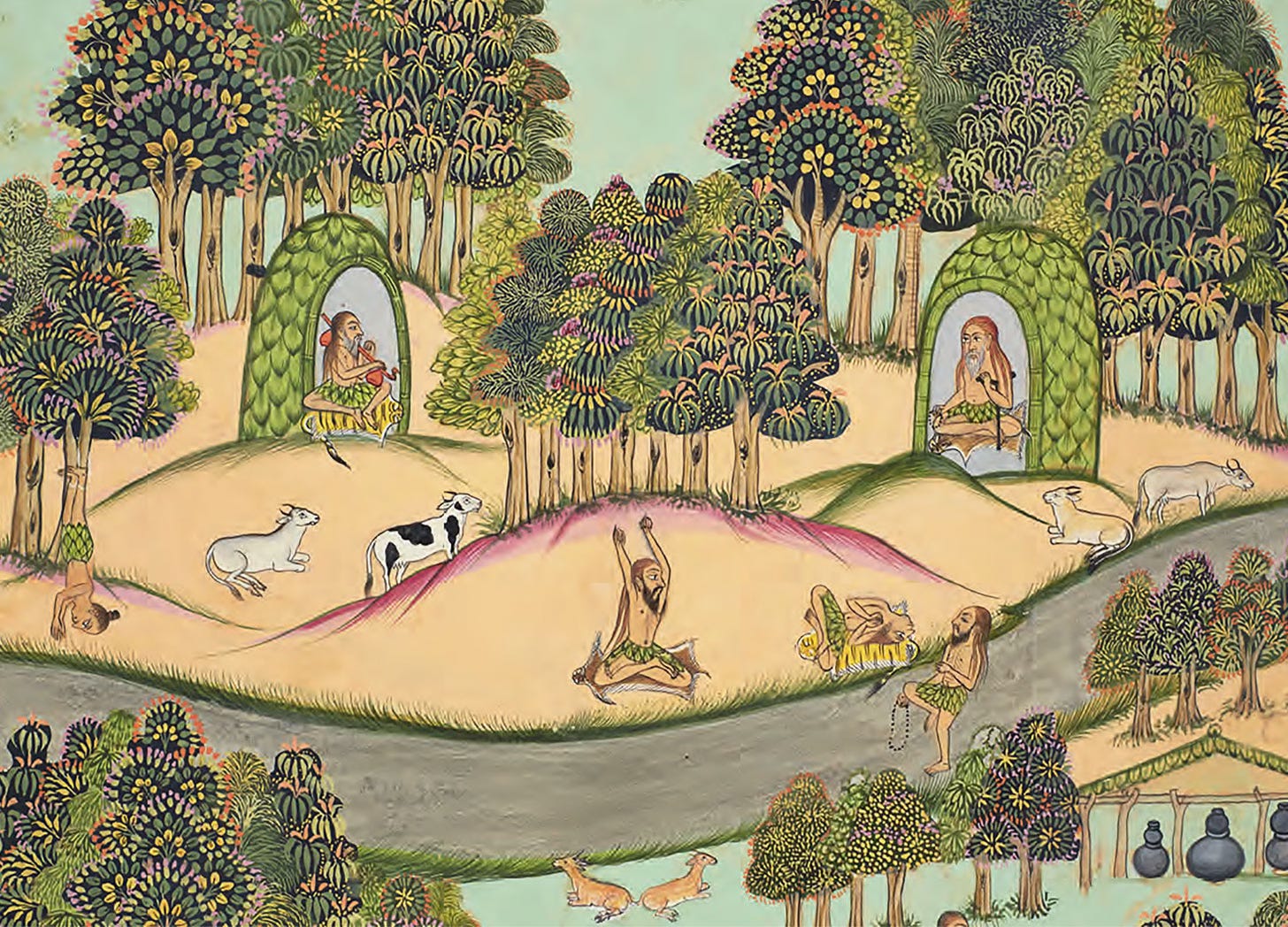How much is unknown about the practice of yoga before the modern era? 🤔
Although researchers have learned a great deal about evolving traditions – from seated meditation to sequences of postures – much remains obscure due to limited evidence. Most of what we know comes from texts, which weren’t the main means of instruction. And since yoga was transmitted orally, it’s often unclear who did what and why, never mind when it started or how things worked.
Medieval texts on the physical methods of haṭha yoga list difficult techniques and fantastical outcomes, such as living for millennia. To quote the scholar Lubomír Ondračka “we do not know, and, in fact, will never know, to what degree they are representative” of how people used them. As Ondračka puts it:
“Without access to descriptive texts reflecting actual practice that can confirm or correct these prescriptive manuals, it is difficult to rely on these works as the only form of historical evidence. Moreover, these texts are practically silent on the social and religious backgrounds of yogis and their everyday life. Thus, although we have a good number of texts on haṭhayogic practice, we know almost nothing about its practitioners.”
We’ve been discussing this in depth on my year-long course, The Path of Knowledge. Tempting as it might be today to reach back into the past for yoga’s roots – not least in search of authenticity – some of what we find there sounds off-putting. A common way around this is to assume that old texts reflect modern approaches, which results in ignoring what they actually say.
It can therefore be jarring to acknowledge disparities, as Ondračka notes. “Although modern yoga shares some features with older yogic traditions,” he writes, “it differs substantially from classical medieval Haṭhayoga”. As a result:
“Teachers are naturally reluctant to admit this fact and present modern yoga as a faithful and uninterrupted continuation of ancient tradition. Upon closer examination, however, we discover that many important haṭhayogic techniques have practically disappeared from modern yoga practice and that the goals of medieval yogis could hardly be attractive for modern practitioners. Who today would believe that yoga practice should result in liberating samādhi [described in texts as a catatonic trance], physical immortality, yogic suicide, or supernatural powers?”
That sort of question can spawn many others about our priorities, providing a focus for what we discuss in our fortnightly seminars. So if you’d like to investigate what yoga means today, compared to what it meant before, or to consider how to anchor innovations in yogic traditions, this course is for you.
We read work like Ondračka’s to help us think critically about our assumptions, and each module explores one key theme through a video overview. The overall aim of the course is inquiry – a perennial priority in yogic texts. You can find out more via the button below, or email me if you have questions.
If you like what you find here, and want to support it, please consider paying to subscribe






I’m in the year long course. I am a C-IAYT, a 500-IAYT, a nurse practitioner and I was a director of cardiac wellness program (similar to Dean Ornish’s) for a Herbert Benson integrated medicine facility. Saying all that only to give reference to possibly what my foundation was before I came to the course. I can’t say enough about how the course has lifted the veil on my understanding and even gave legs to what I taught my yoga students. Daniel has expertly and with great patience and kindness answered my (tons) questions. I have been much like a 7 year old. “But why and what if” and on and on? It is a tremendous opportunity to get them asked and answered, if one wishes. Or without pressure one can remain quiet. Thanks Daniel for giving all of us the resources and the opportunity with support to go as far as one wishes with the information. My only regret is that there isn’t a follow up year long course to build upon where we land with this one. With gratitude. Sandy
I so appreciate your work. It's a balm given all the bullshit. And this made me articulate to myself the slight difference in kinds of bullshit: one saying what we do now is the same as what 'ancients' did, and another just completely doing our own thing, with a kind of anti-history lens.
Aie me.
Thanks for the lovely breath of fresh air you always bring.